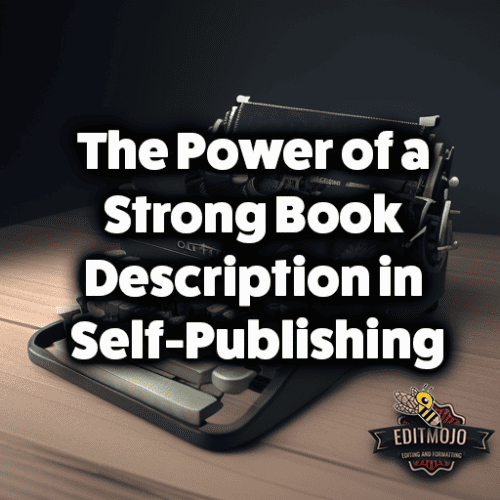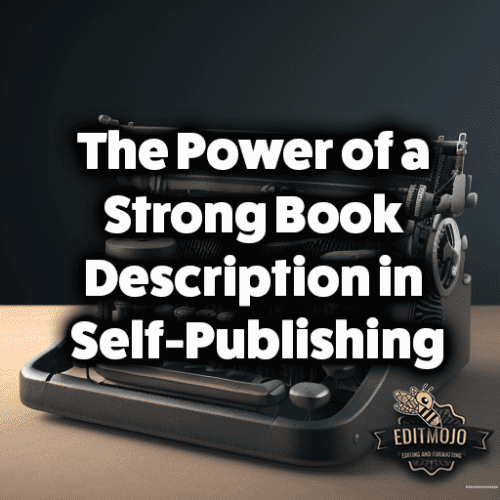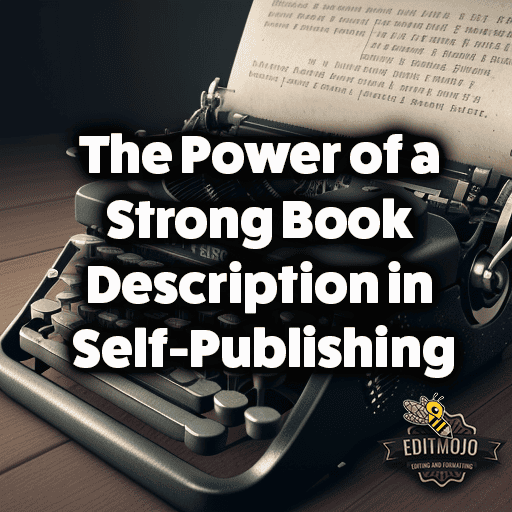The Power of a Strong Book Description in Self-Publishing
The Power of a Strong Book Description in Self-Publishing. In the burgeoning world of self-publishing, authors don the hats of both creators and marketers. The power of their stories doesn’t solely reside within the pages but extends to the all-important book description. The significance of this often-underestimated piece of writing can’t be overstressed. So, what is it about book descriptions that make them so influential? Let’s delve into the world of self-publishing to unravel the truth.
Key Takeaways
| Key Takeaways |
|---|
| A strong book description sets the stage for reader expectations, highlights the book’s uniqueness, and assists in book discoverability. |
| Book descriptions influence a reader’s purchasing decision and can attract professional reviewers and media attention. |
| Effective book descriptions have a captivating opening line, introduce main characters and setting, outline the main conflict, and reflect the book’s genre, theme, and tone. |
| Writing a compelling book description involves crafting an engaging opening, using genre-specific keywords, balancing intrigue with information, avoiding clichés, and maintaining authenticity. |
| Authors should continually test and refine their book descriptions based on feedback and results. |
| Self-published authors can learn from traditional publishing but also enjoy the flexibility to tweak their descriptions as needed. |
| Common mistakes in writing book descriptions include excessive detail, overlooking the target audience, neglecting keywords, and failing to express the book’s unique value proposition. |
| Hiring professional help can be beneficial for crafting an engaging book description. |
The Role of a Book Description in Self-Publishing
Imagine walking into a bookstore. Your eyes skim over hundreds of books. What makes you pick one up? The cover might attract your attention, but the description at the back is what piques your interest. It’s the author’s golden opportunity to engage, convince, and sell their story.
A strong book description sets reader expectations. It introduces potential readers to the characters, the plot, and the conflict. It hints at the experience that awaits within the pages without giving too much away. It tells the readers, subtly, why they should invest their time in this book.
At the same time, it must also highlight the book’s uniqueness. In an ocean of stories, what makes this one stand out? The book description is the author’s chance to flaunt their unique selling proposition.
Lastly, an optimized book description significantly assists in the book discoverability via search engine optimization (SEO). Keywords used strategically can improve a book’s ranking on search results and attract more readers.

The Power of a Well-Crafted Book Description
Book descriptions can have a profound influence on a reader’s purchasing decision. According to a study, 87% of book buyers cite the description as a critical factor influencing their purchasing decision. In essence, your book description can make or break a sale.
But its influence extends beyond readers. A robust description can also pique the interest of professional reviewers and media professionals, paving the way for more exposure and potentially more sales.
One of the most potent examples of the power of a well-crafted book description is Andy Weir’s “The Martian.” Originally self-published, the concise, yet compelling description immediately conveyed the book’s unique premise and tone, capturing readers’ interest. It was a significant factor in the book’s ultimate success, leading to a traditional publishing deal and a blockbuster movie.
Components of a Strong Book Description
Creating a strong book description is more art than science. However, a few key components are often present in the most compelling descriptions.
A Captivating Opening Line
The opening line should hook the reader instantly. For instance, the book “Gone Girl” starts with: “Marriage can be a real killer.” This instantly raises intrigue and sets the tone for the book.

Introduction of Main Characters and Setting
The description should introduce the protagonist(s) and the world they inhabit. It should make the reader feel invested in the characters and their journey.
Outline of the Main Conflict or Plot
While avoiding spoilers, the book description should outline the main conflict or plot of the book. It should pique interest, tease the problem or challenge, and create suspense.
Book’s Genre, Theme, and Tone
The description should clearly convey the book’s genre and tone. If it’s a humor-filled fantasy adventure, the description should reflect that. It’s about managing reader expectations accurately.
Author’s Unique Selling Proposition
This could be a unique setting, a novel twist on a popular trope, an unusual character, or a fresh approach to a common theme. What makes your book different? This needs to shine through your description.
The Art of Writing a Compelling Book Description
Now that we know what makes a strong book description let’s explore how to craft one. Here are a few strategies that can help.
Hook Readers in the First Few Lines
The opening line should grab attention, spark curiosity, and compel the reader to continue reading. For example, “The Catcher in the Rye” begins with: “If you really want to hear about it, the first thing you’ll probably want to know is where I was born, and what my lousy childhood was like…”.
Use Genre-Specific Keywords
Keywords relevant to your book’s genre can make it more discoverable. If you’re writing a hard-boiled detective story, terms like ‘noir’, ‘mystery’, ‘detective’, ‘clue’, etc., can help readers find your book.
Balance Intrigue with Necessary Information
A book description should pique interest without being overly vague. While you don’t want to give away key plot points, the reader should have a clear understanding of what to expect from the book.
Utilize Compelling Language and Avoid Clichés
A well-written book description mirrors the quality of the book. It should be free of clichés and grammatical errors, and it should use vivid and compelling language.

Be Authentic and True to the Book’s Voice
Finally, the tone of the book description should match the tone of the book. This helps manage reader expectations and attract the right audience.
Importance of Testing and Refining Book Descriptions
Writing a book description is an iterative process. It’s important to test different descriptions, gather feedback, and refine based on responses. An excellent way to do this is through A/B testing on a landing page or using social media polls. Remember, even a minor tweak can sometimes lead to a significant improvement in response.
Comparisons: Traditional Vs Self-Publishing Book Descriptions
Traditional publishers have a team of marketing and copywriting professionals crafting compelling book descriptions. As self-published authors, we can learn a lot from these. Analyze successful book descriptions in your genre, identify common threads, and implement these learnings in your own descriptions.
That said, self-publishing offers a level of flexibility traditional publishers don’t have. As a self-published author, you can update and tweak your description based on real-time feedback, which can be a massive advantage.
Common Mistakes to Avoid
Finally, let’s look at some common mistakes authors make while writing their book descriptions. These include writing overly detailed descriptions, ignoring the target audience, neglecting the importance of keywords, and failing to convey the book’s unique value proposition.
Utilizing Professional Help
If crafting compelling book descriptions seems overwhelming, consider getting professional help. A good copywriter can work wonders with your book description. Platforms like Upwork and Fiverr have freelancers specializing in book descriptions.
Conclusion (The Power of a Strong Book Description in Self-Publishing)
The power of a strong book description in self-publishing is undeniable. It can significantly influence your book’s discoverability, readers’ first impression, and ultimately, its sales. As authors, we need to invest as much effort in crafting our book descriptions as we do in writing the book itself.
Writing a captivating book description is a challenging yet rewarding endeavor. I hope these insights and strategies help you create an irresistible one that entices readers, enhances visibility, and boosts sales. Happy writing!
Top Five Questions and Answers (The Power of a Strong Book Description in Self-Publishing)
| Questions | Answers |
|---|---|
| What role does a book description play in self-publishing? | It sets reader expectations, highlights the book’s uniqueness, and aids in search engine discoverability. |
| How can a book description influence reader’s purchasing decision? | A well-written book description can pique a reader’s interest and convince them to buy the book. |
| What are the components of a strong book description? | A captivating opening line, introduction of main characters and setting, an outline of the main conflict or plot, and a reflection of the book’s genre, theme, and tone. |
| How can one write a compelling book description? | By crafting an engaging opening, using genre-specific keywords, balancing intrigue with information, avoiding clichés, and maintaining authenticity. |
| Should book descriptions be revised and refined? | Yes, continual testing and refining based on feedback and results is an important part of crafting an effective book description. |
Top Seven Resources and Further Reading (The Power of a Strong Book Description in Self-Publishing)
